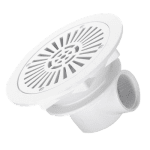Swimming Pool Design
Designing a swimming pool is a multifaceted endeavor that blends functionality, aesthetics, and practical considerations to create a refreshing and inviting aquatic environment. Whether for relaxation, fitness, or entertainment, a well-designed swimming pool enhances the outdoor living space and becomes a focal point of enjoyment for homeowners. Here’s a comprehensive exploration of swimming pool design:
Planning and Conceptualization
Purpose and Usage (Swimming Pool Design)
The first step in designing a swimming pool is to define its primary purpose and how it will be used:
- Relaxation: Create a tranquil environment with water features like waterfalls or fountains and comfortable lounging areas.
- Fitness: Design a pool suitable for swimming laps with a straight configuration and sufficient length.
- Entertainment: Include features such as integrated spas, shallow lounging areas, or lighting for evening gatherings.
Location and Orientation (Swimming Pool Design)
Choose a location that maximizes sunlight exposure and integrates well with the overall landscape:
- Sunlight: Position the pool to receive adequate sunlight throughout the day, which helps in heating the water naturally and creates a more enjoyable swimming experience.
- Integration: Consider how the pool will blend with existing structures, landscaping, and outdoor living spaces to create a cohesive environment.
Design Elements
Pool Shape and Size (Swimming Pool Design)
Swimming pools come in various shapes, each offering unique benefits and aesthetic appeal:
- Rectangular: Provides a classic, formal look and is ideal for swimming laps and maximizing space efficiency.
- Free-Form: Mimics natural bodies of water with organic shapes that blend seamlessly into landscaped gardens or irregularly shaped yards.
Materials and Finishes (Swimming Pool Design)
Choosing the right materials for the pool and surrounding area is crucial for both durability and visual impact:
- Pool Liners: Options include tiles, which are durable and come in a variety of colors and patterns, or vinyl liners, which offer affordability and easy maintenance.
- Decking: Use materials like natural stone, concrete pavers, or wood decking around the pool to create functional space for lounging, dining, and entertaining.
- Walls and Coping: Opt for materials such as poured concrete, brick, or stone veneers that complement the pool’s design and provide a cohesive appearance.
Water Features (Swimming Pool Design)
Incorporate water features to enhance visual interest, create soothing sounds, and add a touch of luxury:
- Waterfalls: Natural rock waterfalls or sheer descent waterfalls create a serene ambiance and can be integrated into various pool designs.
- Fountains: Decorative fountains add elegance and can be adjusted to create different water patterns and sounds.
- Spas and Hot Tubs: Integrated spas or standalone hot tubs adjacent to the pool offer relaxation and hydrotherapy benefits.
Lighting (Swimming Pool Design)
Strategic lighting enhances safety, ambiance, and usability of the swimming pool area:
- Underwater Lighting: LED lights submerged in the pool highlight its features and provide visibility for night swimming.
- Ambient Lighting: Install lighting along pathways, seating areas, and landscaping to create a welcoming atmosphere and extend poolside enjoyment into the evening.
Functional Considerations
Heating and Circulation (Swimming Pool Design)
Ensure the pool has efficient heating and circulation systems to maintain water quality and comfort:
- Heating: Options include electric heaters, heat pumps, solar heating, or integrated solar covers to extend the swimming season and reduce energy costs.
- Filtration: Install a reliable filtration system with pumps and filters to remove debris, maintain water clarity, and distribute chemicals evenly.
Safety Measures (Swimming Pool Design)
Prioritize safety with features like pool covers, fencing, and non-slip surfaces:
- Pool Covers: Use a cover when the pool is not in use to prevent accidents, conserve heat, and reduce maintenance.
- Fencing: Install a fence around the pool area with a self-closing, self-latching gate to restrict access and comply with safety regulations.
Maintenance and Care (Swimming Pool Design)
Regular maintenance is essential to preserve the pool’s beauty and functionality over time:
- Cleaning: Skim debris, brush walls, and vacuum the pool regularly to maintain water clarity and prevent algae growth.
- Chemical Balance: Test water chemistry regularly and adjust pH, chlorine levels, and other chemicals as needed to ensure safe and comfortable swimming conditions.
- Winterization: Prepare the pool for winter by draining water from equipment, covering the pool, and protecting vulnerable components from freezing temperatures.
Swimming pool design is a crucial element for homeowners looking to create a stunning outdoor space that combines aesthetics and functionality. A well-designed pool can enhance the beauty of your property, provide a relaxing retreat, and offer a perfect venue for family gatherings and social events. Here are key considerations and trends in swimming pool design to inspire your project.
1. Shape and Size
The first step in swimming pool design is determining the shape and size that best fits your space. Popular shapes include rectangular, square, oval, and freeform designs. Rectangular pools are ideal for modern aesthetics and swimming laps, while freeform pools create a more natural look, blending seamlessly with the landscape. Consider the available yard space and your intended use to select the right dimensions.
2. Materials
The choice of materials plays a significant role in the overall design. Options range from traditional concrete to fiberglass and vinyl. Concrete pools offer durability and flexibility in design, allowing for custom shapes and finishes. Fiberglass pools, on the other hand, are easier to install and maintain, making them a popular choice for many homeowners.
3. Features and Amenities
Adding features and amenities can elevate your pool design. Consider incorporating waterfalls, fountains, or lighting to create an enchanting atmosphere. Built-in benches or tanning ledges provide functional relaxation areas. For those looking for a luxurious touch, including a spa or hot tub adjacent to the pool can enhance the overall experience.
4. Landscaping
Integrating landscaping into your pool design is essential for creating a cohesive outdoor space. Surround the pool with tropical plants, flowers, and decorative stones to enhance its natural beauty. Consider using non-slip decking materials to ensure safety and comfort around the pool area.
5. Safety Measures
Safety should be a top priority in swimming pool design. Install secure fencing, gates, and safety covers to protect children and pets. Incorporate steps or ladders that are safe and easy to use, ensuring smooth access to and from the pool.
6. Eco-Friendly Options
Sustainable swimming pool design is gaining popularity among environmentally conscious homeowners. Consider energy-efficient pumps, solar heating systems, and natural filtration methods to minimize environmental impact. Using eco-friendly materials and water-saving features can further enhance your pool’s sustainability.
Conclusion
Designing a swimming pool involves careful planning and consideration of various elements to create a functional, aesthetically pleasing, and safe outdoor oasis. By integrating features such as pool shape, materials, water features, lighting, and landscaping, homeowners can enhance their outdoor living space and enjoy the benefits of a swimming pool year-round. With proper design, installation, and maintenance, a well-designed swimming pool not only adds value to the property but also provides a source of relaxation, exercise, and enjoyment for family and friends.


















